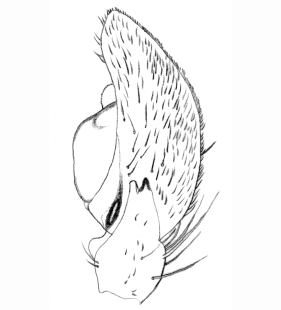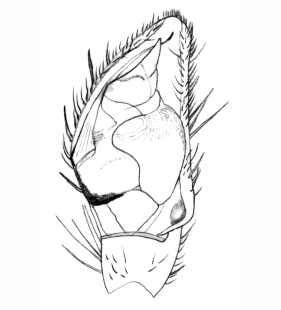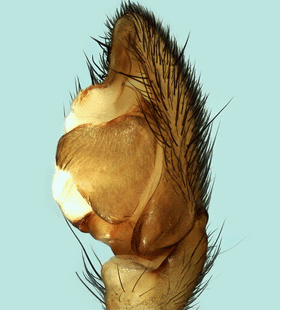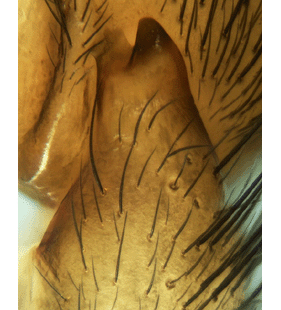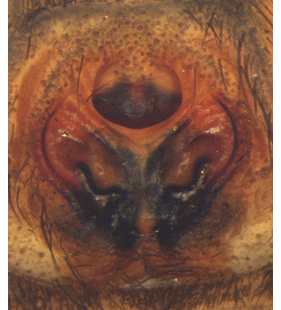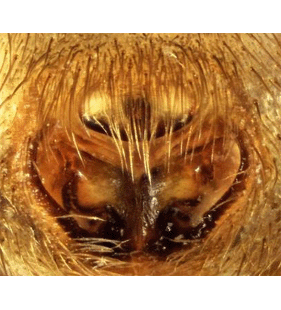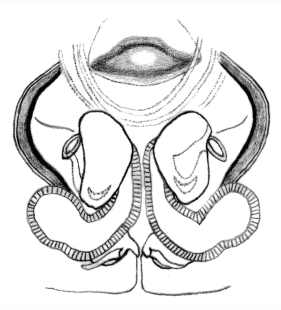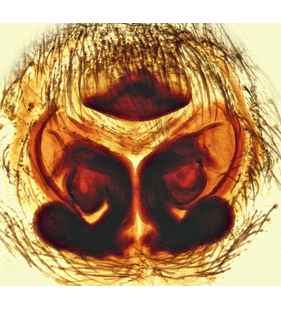Gnaphosa ogeri Lecigne, 2018
Description
Male
Very similar to G. lugubris, but palpal tibial apophysis with bifid tip. The ventral part is lamellous and rectangular in appearance; the dorsal part is conical, tooth-like and bent inwards. Distal part of median apophysis pointing in a regular and tapered reddish triangle, slightly twisted retrolaterally. Embolus with inconspicuous prolateral protuberance which, more precisely, takes the form of a little basal tooth, black, bifid, the triangular upper part thicker. Opisthosoma dorsally light grey brown, ventrally paler.
Body length male: 11.8-12 mmFemale
Generally as in male.
Epigyne/vulva: Scape and epigynal cavity relatively wide, ratio width of hood (scape)/width of atrium 0.47-0.56. Armature of epigynal hood thick, reaching the front edges both of the median epigynal ducts and the epigynal cavity. Median epigynal ducts rather short and X-shaped. Head of receptacles directed downward. Copulatory ducts coiled.
Additional information
Because of its bifid tibial apophysis and potentially similar ecological preferences (under stones, in dry and warm conditions - alpine and limestone grassland, rock steppes, meadow and forest clearing -), males of G. ogeri probably have been misidentified as G. occidentalis in its ditribution area.
Frequency: Can be locally frequent.
Distribution
Phenology
| Jan | Feb | Mar | Apr | May | Jun | Jul | Aug | Sep | Oct | Nov | Dec |
 |  |
Figures
Distribution List
"No references" does not mean that the species does not occur in this country, but that we have not yet inserted the reference for it. We are working on it.
References
Lecigne S (2018a) Gnaphosa ogeri n.sp., a new species from France (Araneae: Gnaphosidae). Nieuwsbrief van de Belgische Arachnologische Vereniging 33: 45-58 ![]()
WSC (2025) World Spider Catalog. Version 26. Natural History Museum Bern, online at http://wsc.nmbe.ch (28.2.2025) doi: 10.24436/2 ![]()



